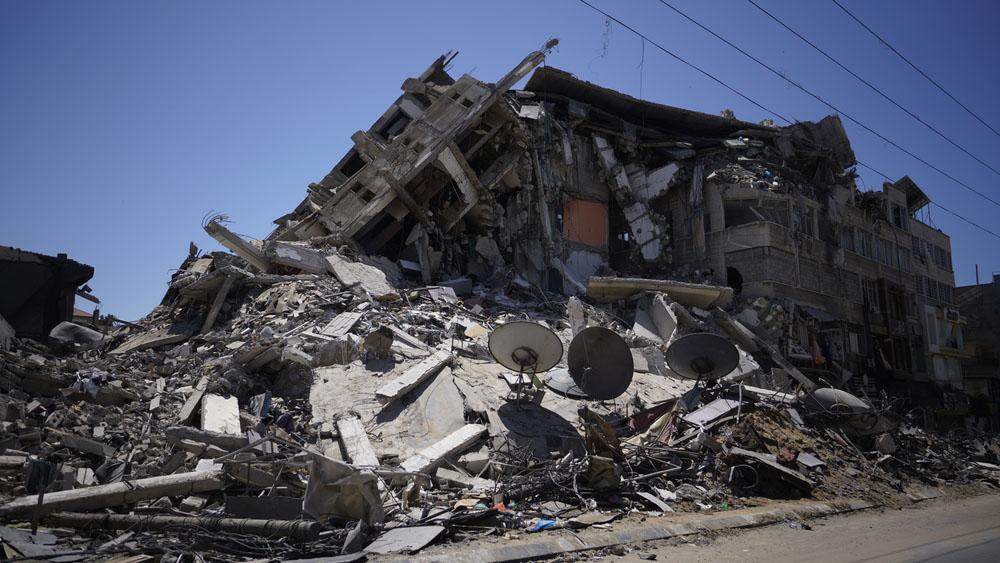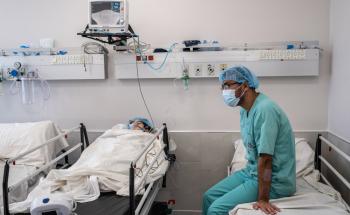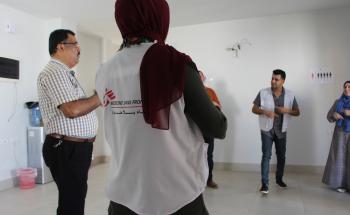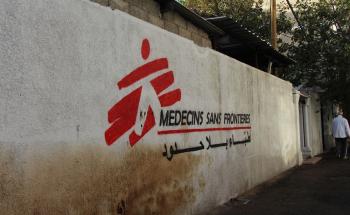In early August, during a three-day escalation of violence between Israel and militants in Gaza, 49 Gazans were killed, including 17 children, compounding an already desperate humanitarian situation in the blockaded Strip.
Following the ceasefire, MSF asked patients and Palestinian staff to share how this cycle of violence impacts themselves and their families in their own words. These are their stories.
Sakhar was asleep when a bomb hit his family home in Gaza City, and even then, he knew exactly what was happening. That was before he lost consciousness, before being transported to the hospital, before coming to and realizing that once again, he and his family had survived.
Sitting in an MSF Gaza clinic on 10 August, five days after the bombing and two days after a ceasefire was announced, he swipes through photos on his phone sent by his neighbours. They show him, and his brothers unconscious on the ground, faces covered in blood and cement dust. He marvels at the fact that here they are, still alive.
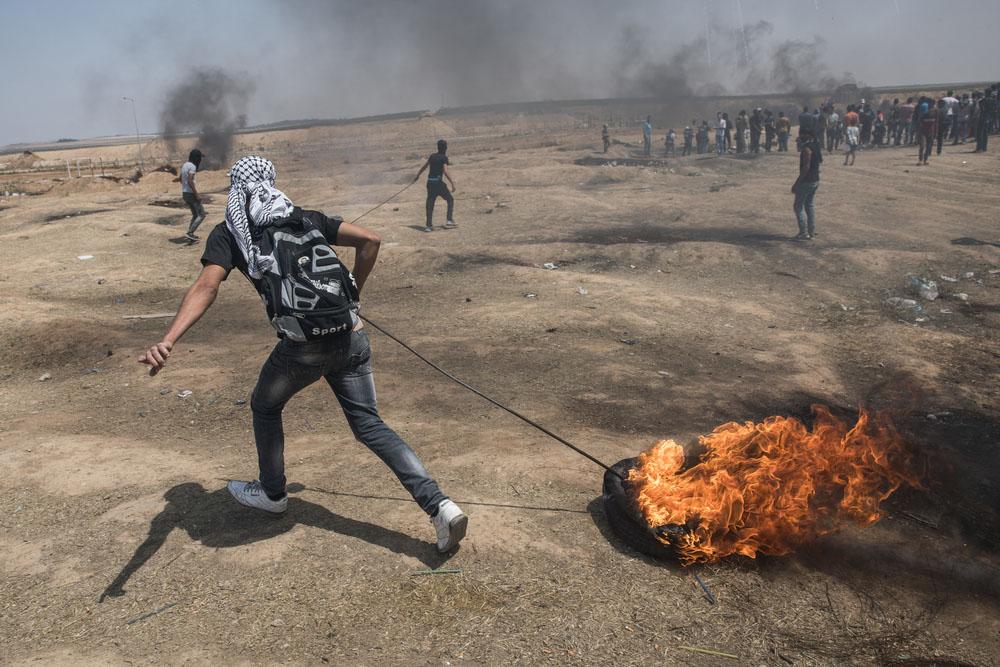
Not only did Sakhar, who is thirty years old and a father of four, survive this August 2022 bombing, but he also survived another bombing during the 2014 war in Gaza, where he needed skin grafts. Today, his back is covered in fresh, open cuts, and he has come to the clinic with his two younger brothers, both of whom sustained severe fractures and abrasions, to have their dressings changed.
Their family are among the approximately 350 Gazans who sustained severe injuries during this round of escalation, joining the several thousand others who have been injured or disabled by one of the five wars on Gaza that have taken place in 15 years. This time around, according to the United Nations, 49 Gazans were killed, including 17 children.
During the 2008 war, I was in 4th grade. I remember as children, we used to hear the explosions and see the dead bodies. In 2012, again, we saw many injured and dead people, and I lost many of my friends at the time. Then in the 2014 war, our house was damaged. Over the years, we saw horrible sights, but not like this one.”Mahmoud, 22, MSF Pateint
Sakhar’s brothers, who are 22 and 13, recall how their lives have been shaped by their close proximity to the trauma of war despite repeatedly moving neighbourhoods to escape the destruction.
For Gazans like Sakhar and his brothers, the cycle of repeated wars has led to compounded physical and mental health traumas. For healthcare workers, too, the scenes in the emergency rooms have become all too familiar.
Dr Osama Tawfiq Hamad, an anesthesiologist, was working on Friday night when the bombs began to hit Gaza. As a doctor for MSF since 2019, he has provided care for patients through two wars. He describes how the emergency room at Al-Awda hospital filled up within minutes, receiving over 15 patients, including six children. He treated one young child who had been hit with shrapnel to the skull and another with a hematoma in the chest, both requiring urgent surgery.
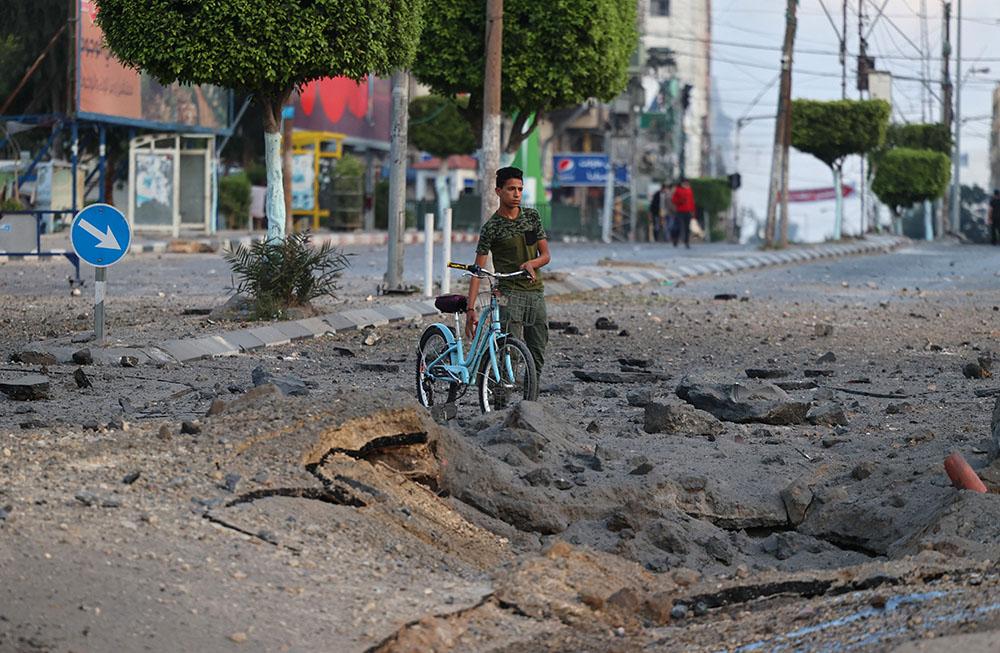
Dr Osama points to the fact that over time, for those patients that survive, returning to the hospital for follow-up surgeries, physiotherapy, and support following the mental and physical injuries of war becomes part of their daily lives.
His colleague Shadi Al-Najjar, who manages the physiotherapy department at Al-Awda Hospital with MSF, is familiar with the revolving door of patients that come in waves after each war.
“I am still seeing patients from the May escalation in 2021, getting rehabilitation and physiotherapy. In our department, we have a high load of patients as well from the Great March of Return. We are now preparing the department, both in and out-patient, to receive the injured from this escalation.”
“In Gaza, (in the past 15 years) we’ve had five wars, and every time there’s an airstrike we have a huge amount of (injured people) that all come to the hospital at one time. You could have 50 or more patients at a time. In these moments, we have very bad emotions, anger and mixed emotions, but you must be strong to deal with the cases.”
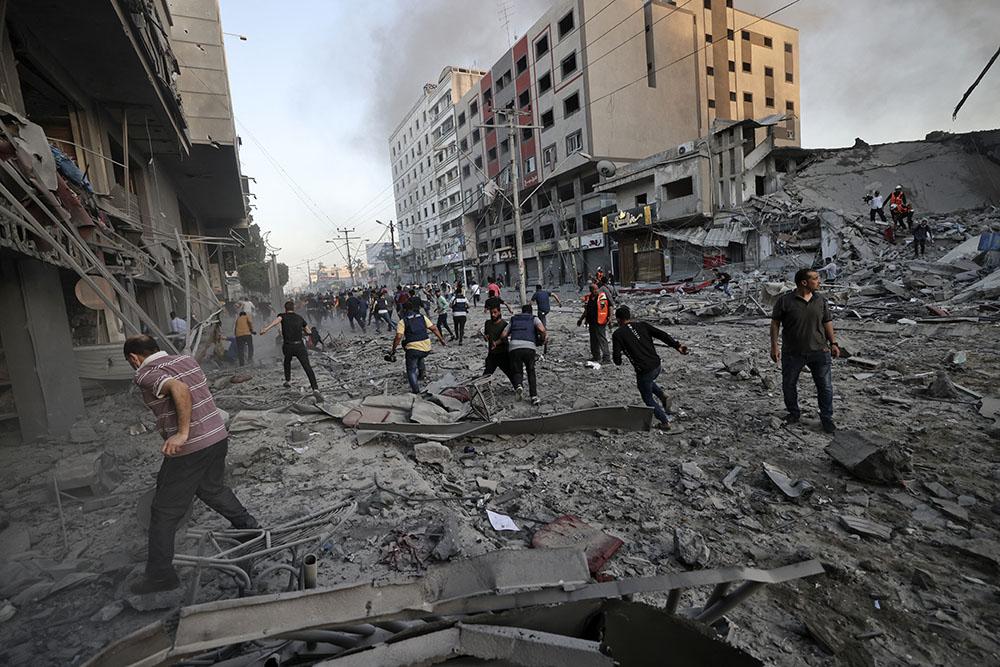
My eldest is now 5 years old. And after this escalation my son has been asking me to stop the war, and he always screams at night, he has not slept for 3 nights and when he is asleep he wakes up from nightmares and starts running and I don’t know what to do or how to help him.Shadi Al-Najjar
Shadi has returned to work, managing existing and new caseloads, despite his own experience over the weekend. His home was partially destroyed on the second day of the war, as his neighbour's house was hit. His family didn’t have a chance to evacuate before his 9-month-old son’s room was damaged – he found him in his crib surrounded by glass and shrapnel, but without injury. He says his youngest daughter has been traumatized, too.
“She is not able to sleep, crying all the time; I am trying to be as supportive as I can for them.”
Like Shadi, Sakher also emphasized that one of the worst parts of coping with the aftermath is in trying to support his children emotionally; “My eldest is now five years old. And after this escalation, my son has been asking me to stop the war, and he always screams at night, he has not slept for 3 nights, and when he is asleep, he wakes up from nightmares and starts running, and I don’t know what to do or how to help him.”
The trauma of repeated violence in Gaza has made a discernible impact on children's and parents' mental health. According to the WHO in 2021, 82 per cent of adolescents in Gaza reported overall poor to very poor levels of mental wellbeing. The United Nations’ 2022 Humanitarian Needs Overview states that more than half (53 per cent) of all children in Gaza are in need of child protection and mental health services. Additionally, 137,000 caregivers in Gaza are in need of mental health services.
In the days following the escalation, MSF staff members and patients frequently expressed their concern for their children and other young people in Gaza who have grown up or will grow up in an environment where escalations take place with disturbing regularity.
After his wound dressings were changed, Wael, the 13-year-old brother of Sakhar and Mahmoud, was asked by an MSF support worker what he wants for the future.
“I hope that there will be no wars in the future, and the calm (in Gaza) stays, without any bombings.”
